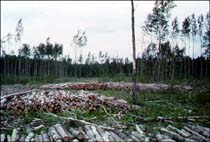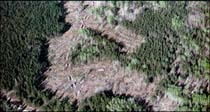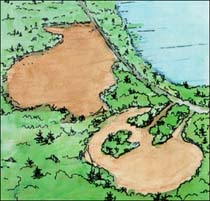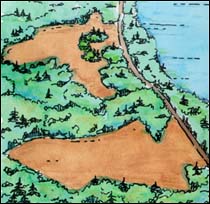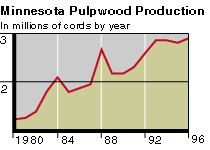Clear-Cutting Facts and Images
November 18, 1998
Part of Our State, Our Forests
Clear-Cutting Moving Faster Than Timber Reform.
Illustrations: Visual Quality Best Management Practices for Forest Management in Minnesota, May 1994. Illustrator: Susan M. Davies
November 18, 1998
Part of Our State, Our Forests
These images below demonstrate how modern timber-harvesting practices screen clear-cut areas from public view. See the story Clear-Cutting Moving Faster Than Timber Reform.
Clear-Cutting Moving Faster Than Timber Reform.
Illustrations: Visual Quality Best Management Practices for Forest Management in Minnesota, May 1994. Illustrator: Susan M. Davies

